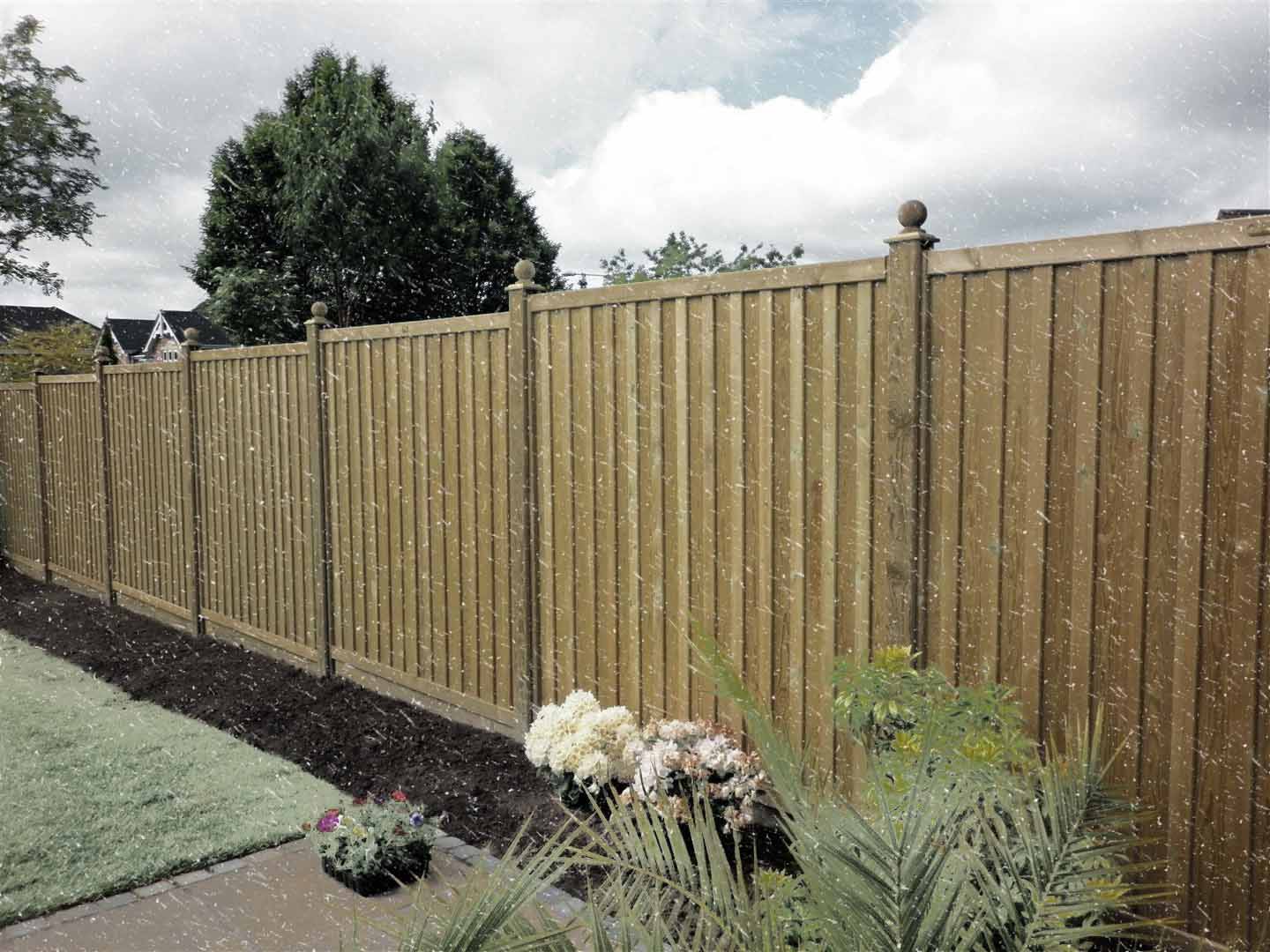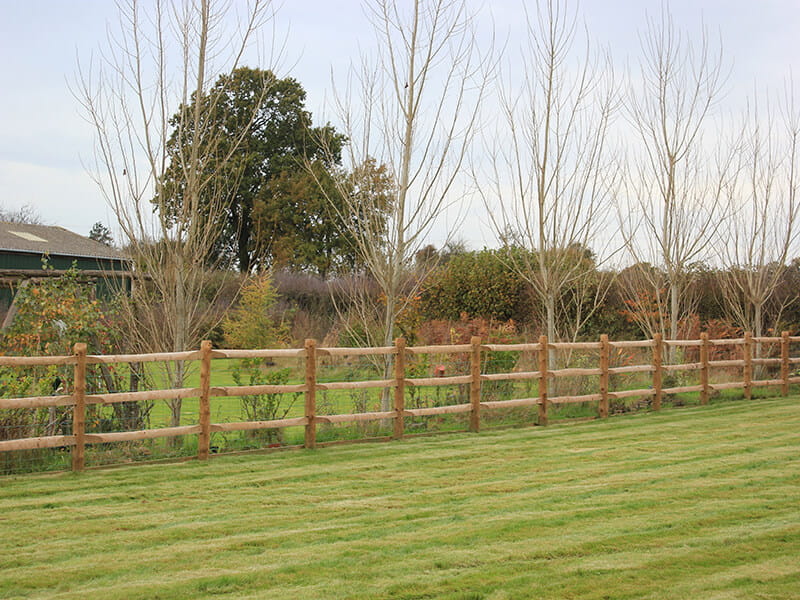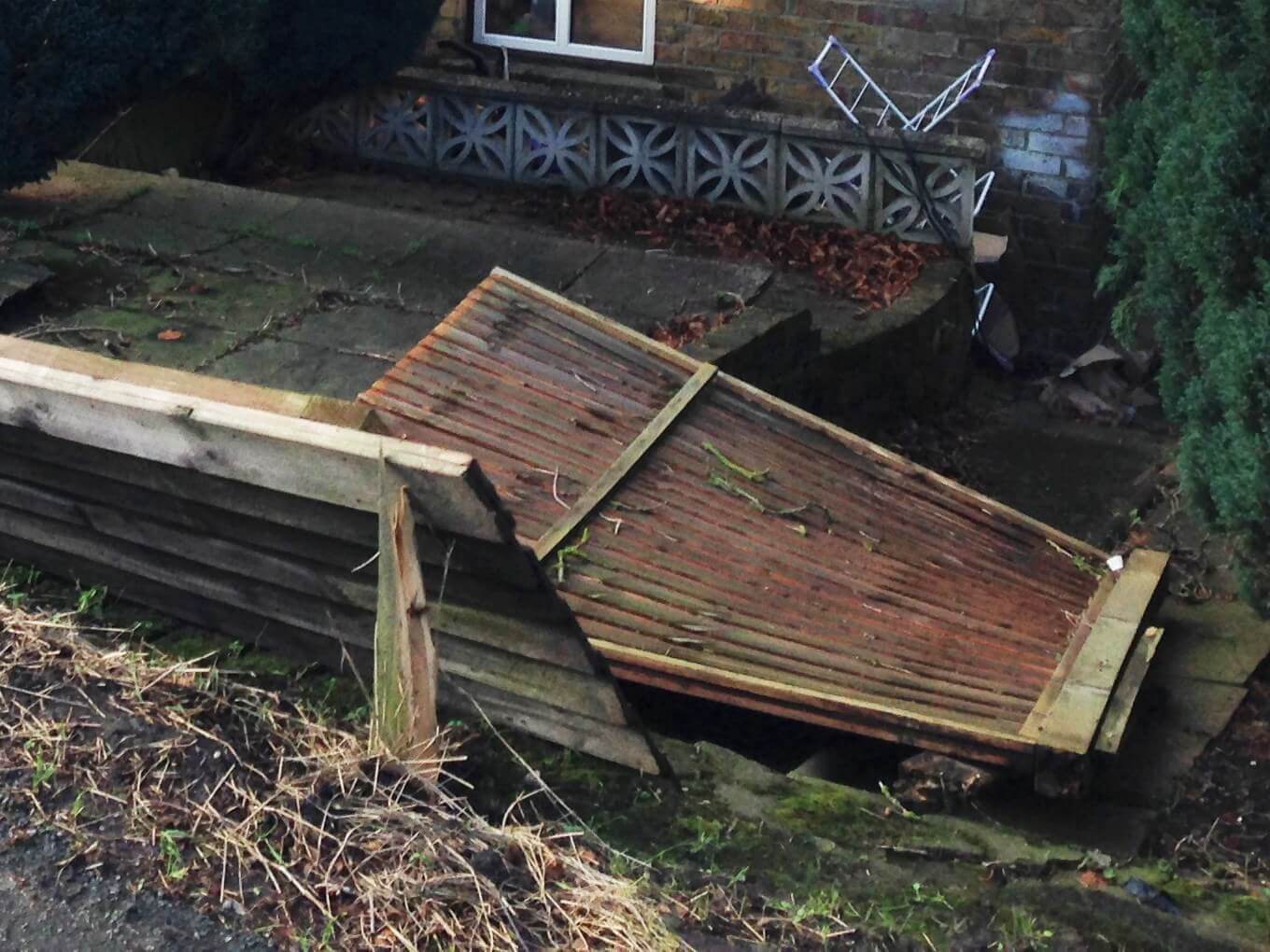5 Tips for Preparing Your Fence For Winter
Posted by Jacksons Fencing on 2nd December 2020 -

Don’t be fooled by the autumn warm weather and glorious colours. The days are starting to become shorter, winter is approaching and while its still mild now is the best time to check your fence will survive what the change of season has to bring.
Below are our top 5 tips to being prepared and ensuring your fence lasts the winter season. Click the link to go directly to the tip you want to read about.
1. Perform visual checks
2.Clear away debris
3.Remove weak or low hanging branches
4.Buy treated timber
5.Check the posts
1. PERFORM A VISUAL CHECK
It is well worth taking a wander along the existing fence line to check for any visible signs of damage, rot or decay. If your fence is looking a little worse for wear, it may be worth considering whether or not to replace the current installation so that it will stand up to prolonged poor weather conditions or a storm.

2.CLEAR AWAY ANY DEBRIS FROM THE FENCE
Move leaves and debris away from the fence line as leaves can trap moisture against the fence causing the timber to decay prematurely and faster than it naturally would without any ground contact. This is one of the many reasons we recommend using a gravel board because its primary purpose is to raise the fencing away from the ground to avoid contact. If it snows, don’t create drifts near the fence as again there will be a build up in moisture. Another option is creating compost for your dead leaves and the Epic Gardening has a great blog about dealing with leaves in the garden.
3. REMOVE WEAK OR LOW HANGING BRANCHES
In the strong wind, or heavy snow, branches could potentially fall and damage your fence.

4.TIMBER TREATMENT
Here at Jacksons we make our posts, gravel boards and any product that will be in contact with soil, from a different type of timber to our panels and our other products like gates or rails that will have little or no contact with the ground. Our bespoke treatment process strengthens the timber, making it almost impervious to rot or wood boring pests.
5. CHECK THE POSTS
One of the most common causes of fences not staying where you want them to be - which is hopefully upright - is because the posts are of inferior quality. If you see a fence at a funny angle, look down at where the posts meet the ground, quite often you will see the reason the fence is leaning in a precarious manner is because the posts have rotted at ground level. If you think about it, a fence panel is a bit like a sail, a large flat surface that will by its very nature catch a hefty dose of wind – the wind loading on the panel will put a fair amount of strain on the posts at the fixed point they go into the ground. Any weakening in the post due to continued soaking in the ground, bad quality timber and lack of treatment, and the post will eventually snap like a match stick!

Now is the time to check your posts, don’t let winter get the best of you or your fence.




